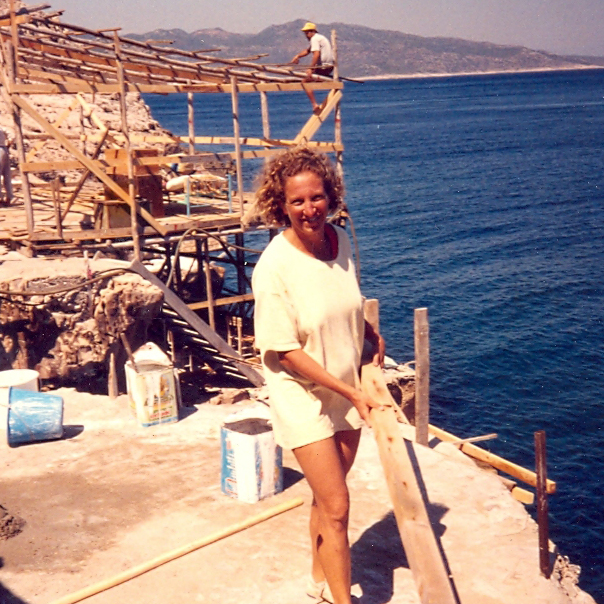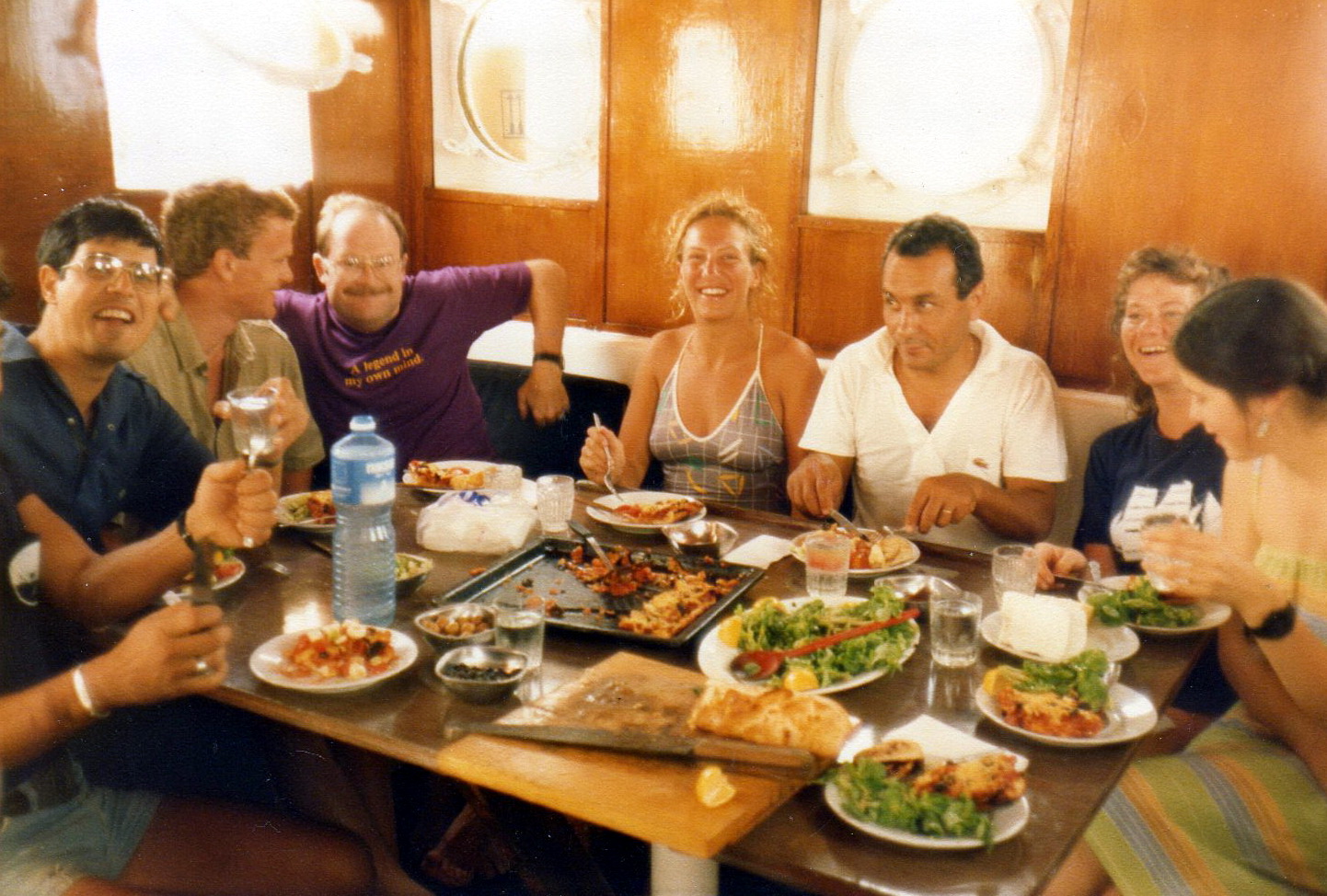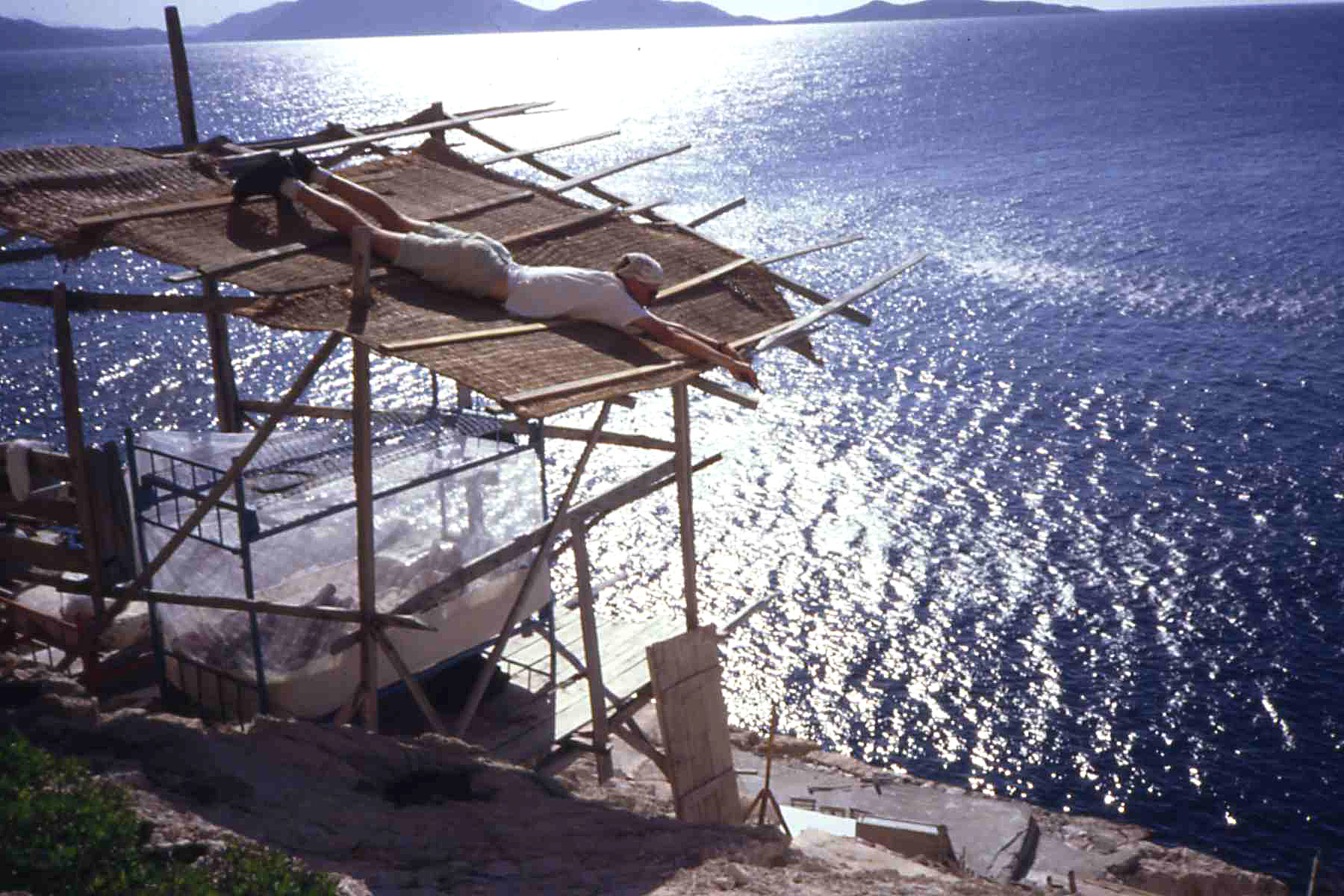Nicolle Hirschfeld

 I am now a professor in the department of Classical Studies at Trinity University, a small liberal arts college in San Antonio, Texas. The most popular course I teach is a survey of seafaring in the ancient Mediterranean; I think its popularity derives as much from the first word of its title, “Pirates, Merchants, and Marines”, as its subject matter. That said, history through the lens of shipwrecks is a compelling draw and I routinely get comments on my class evaluations along the line of “Not enough about pirates, but I never realized how much we can learn about commerce and technologies and warfare.” Well, of course. But I had to come to that realization myself, too, though not until I was a graduate student. My undergraduate training was in Classical and Near Eastern archaeology, at Bryn Mawr College, and while I was researching my senior thesis on the metal technologies of the Mediterranean Late Bronze Age, the discovery of the Uluburun shipwreck hit the news. This was in the very early days of the internet and I had little idea of what I was signing up for, when I applied to the Nautical Archaeology Program (NAP). I just knew I wanted in. When I stepped off the plane, I expected desert, cacti, cattle, and cowboys.
I am now a professor in the department of Classical Studies at Trinity University, a small liberal arts college in San Antonio, Texas. The most popular course I teach is a survey of seafaring in the ancient Mediterranean; I think its popularity derives as much from the first word of its title, “Pirates, Merchants, and Marines”, as its subject matter. That said, history through the lens of shipwrecks is a compelling draw and I routinely get comments on my class evaluations along the line of “Not enough about pirates, but I never realized how much we can learn about commerce and technologies and warfare.” Well, of course. But I had to come to that realization myself, too, though not until I was a graduate student. My undergraduate training was in Classical and Near Eastern archaeology, at Bryn Mawr College, and while I was researching my senior thesis on the metal technologies of the Mediterranean Late Bronze Age, the discovery of the Uluburun shipwreck hit the news. This was in the very early days of the internet and I had little idea of what I was signing up for, when I applied to the Nautical Archaeology Program (NAP). I just knew I wanted in. When I stepped off the plane, I expected desert, cacti, cattle, and cowboys.
 I did not expect a red-headed stranger in an orange VW micro-bus: Jim Jobling, my prospective room-mate, coming to the rescue, to pick me up from the long line of newly shorn cadets at the admissions building. Nor did I expect the NAP buildings to be located 15 miles from campus. My cycling skills improved exponentially, by necessity. I did not expect the comradery among the graduate students or the diversity of our interests and expertise or the noon-time soccer games. I did not expect to learn about archaeobotany from Cheryl Ward or the harborworks of Caesarea from Michael Fitzgerald or drawing ships’ lines from Fred Hocker or *everything* from Cemal Pulak. (We’ve been given a word limit for this or I would mention the dozen other names that leap into my memory, Beth and Eri and Mare and ….). I did get to go to Uluburun: six glorious,
I did not expect a red-headed stranger in an orange VW micro-bus: Jim Jobling, my prospective room-mate, coming to the rescue, to pick me up from the long line of newly shorn cadets at the admissions building. Nor did I expect the NAP buildings to be located 15 miles from campus. My cycling skills improved exponentially, by necessity. I did not expect the comradery among the graduate students or the diversity of our interests and expertise or the noon-time soccer games. I did not expect to learn about archaeobotany from Cheryl Ward or the harborworks of Caesarea from Michael Fitzgerald or drawing ships’ lines from Fred Hocker or *everything* from Cemal Pulak. (We’ve been given a word limit for this or I would mention the dozen other names that leap into my memory, Beth and Eri and Mare and ….). I did get to go to Uluburun: six glorious,  challenging summers (Faith, Sheila, Chris, Stephen, Brendan, Jack, Claire, Lillian, Caroline … again the word limit). I learned oodles: about the Late Bronze Age, about diving deep, about keeping records, about building camp, about the several hundred ways okra can be served and Sadık the cook’s one-and-only sublime lentil soup, about being a team member, about initiative, about improvising, about failure. And then the follow-up in the conservation labs, learning with and from the amazing staff (Tuba! Esra, Bilge, Gülser, Güneş…).
challenging summers (Faith, Sheila, Chris, Stephen, Brendan, Jack, Claire, Lillian, Caroline … again the word limit). I learned oodles: about the Late Bronze Age, about diving deep, about keeping records, about building camp, about the several hundred ways okra can be served and Sadık the cook’s one-and-only sublime lentil soup, about being a team member, about initiative, about improvising, about failure. And then the follow-up in the conservation labs, learning with and from the amazing staff (Tuba! Esra, Bilge, Gülser, Güneş…).
Working at Uluburun and earning my M.A. through NAP have been fundamental to shaping my person and career — in terms of academic identity, knowledge, skills, and professional relationships — and privileging me with adventures and memories and friends for a lifetime.
